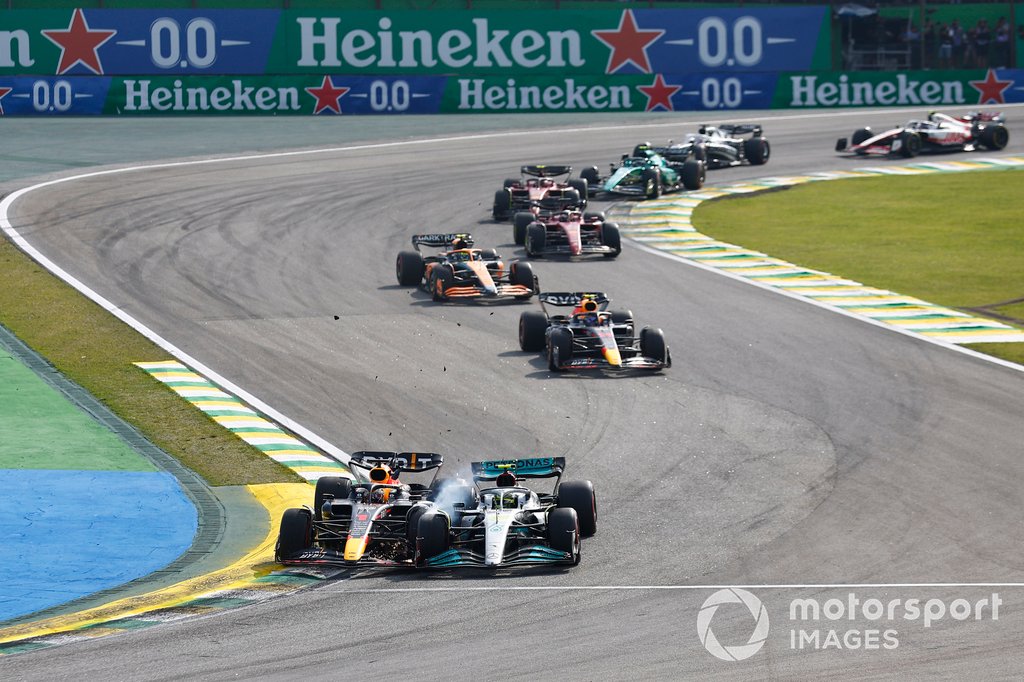Verstappen’s racecraft and conduct in close battles has been widely praised this year. But it was the Red Bull driver who copped a penalty for causing a collision with Hamilton as they fought for second place on the first safety car restart, the pair touching through the Senna esses.
Verstappen had taken the high line into Turn 1 in a bid to get the inside for the switchback and to pass Hamilton, knowing he had to be aggressive if he wanted to take the fight to Mercedes given his sprint race struggles.
But Verstappen appeared to run out of room as the apex neared, something he blamed on Hamilton. As he made his way back to the pits to get a new front wing, Verstappen claimed Hamilton left him no room. Hamilton, meanwhile, said on the radio that it was “no racing incident.”
The stewards handed Verstappen a five-second penalty for the collision, but many fans were left undecided over who was to blame. It was even noted in the stewards’ ruling that Hamilton could have left a bit more room, meaning Verstappen was “predominantly”, not “wholly”, to blame.
The debate over such overtaking moves and who has the right to a corner was more apparent last year, particularly through the on-track duels between Verstappen and Hamilton, the former getting his elbows out sometimes a little too sharply. Ahead of the 2022 season, a set of guidelines were issued to drivers about overtaking conduct that go some way to explaining why Verstappen received the penalty he did at Interlagos.
Max Verstappen, Red Bull Racing RB18, Lewis Hamilton, Mercedes W13, collide
Photo by: Sam Bloxham / Motorsport Images
According to the guidelines, in order for a driver overtaking on the inside to be given sufficient room, it had to have a “significant portion” of the car alongside. The overtaking manoeuvre must be done in a safe and controlled manner.
What is defined as a “significant portion” is at the stewards’ discretion, but a main consideration has to be if the overtaking car’s front tyres are alongside the other car by no later than the apex of the corner.
Although Verstappen’s front wheels were alongside Hamilton’s car – in line with his sidepod – as they neared the apex, the stewards did not feel there was complete control, claiming his overtake at Turn 1 had not been completed.
“Verstappen attempted to pass Hamilton on the outside of Turn 1 by braking very late,” read the stewards’ report. “He did not complete the pass in Turn 1…
Click Here to Read the Full Original Article at Autosport.com – Formula 1 – Stories…

